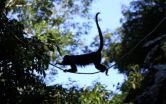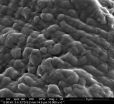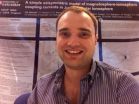(Press-News.org) A new imaging method for the study of insulin-producing cells in diabetes among other uses is now being presented by a group of researchers at Umeå University in Sweden in the form of a video in the biomedical video journal, The Journal of Visualized Experiments.
The developed techniques have contributed to the reasons why the research team recently received a SEK 4.3 million grant from the EU in a Marie Curie program to link together leading research teams in Europe in the field of diabetes imaging.
Professor Ulf Ahlgren and his associates at the Umeå Center for Molecular Medicine (UCMM) have subsequently elaborated the technology for biomedical imaging with optical projection tomography (OPT). Initially the method could only be used on relatively small preparations, but five years ago the scientists at Umeå were able to adapt the technology to study whole organs including the pancreas from adult mice. The present findings describe a further development of the OPT technology by going from ordinary visible light to the near-infrared spectrum. Near infrared light is light with longer wavelengths that can more easily penetrate tissue. Thereby, the developed imaging platform enables studies of considerably larger samples than was previously possible. This includes the rat pancreas, which is important because rats as laboratory animals are thought to be physiologically more similar to humans.
This adaptation, to be able to also image in near-infrared light, also means that the researchers gain access to a broader range of the light spectrum, making it possible to study more and different cell types in one organ preparation. In the article the scientists exemplify the possibility of simultaneously tracking the insulin-producing islets of Langerhans as well as the autoimmune infiltrating cells and the distribution of blood vessels in a model system for type-1 diabetes.
Internationally, huge resources are being committed to the development of non-invasive imaging methods for study of the number of remaining insulin cells in patients with developing diabetes. Such methods would be of great importance as only indirect methods for this exist today. However, a major problem in these research undertakings is to find suitable contrast agents that specifically bind to the insulin producing cells of the pancreas to allow imaging. In this context, the developed Near Infrared - OPT technology can play an important role as it enables the evaluation of new contrast agents. It may also be used as a tool to calibrate the non-invasive read out by e.g. magnetic resonance imaging (MRI). This is now going to be tested in the newly launched Marie Curie project "European Training Network for Excellence in Molecular Imaging in Diabetes," which links together five major EU-funded research consortia with different cutting-edge competences in the field.
The study by scientists from Umeå is presented in the Journal of Visualized Experiments, which is the first scientific journal to offer the video format for publication in the life sciences. Visualization in video presentations clearly facilitates the understanding and description of complex experimental technologies. It can help address two major challenges facing bioscience research: the low transparency and poor reproducibility of biological experiments and the large amounts of time and work needed to learn new experimental technologies.
INFORMATION:
Other authors of the article are Christoffer Svensson, Anna Eriksson, Abbas Cheddad, Andreas Hörnblad, Maria Eriksson, Nils Norlin, Elena Kostromina, and Tomas Alanentalo, all at UCMM; Fredrik Georgsson at the Department of Computer Science; all with Umeå University, along with Antonello Pileggi, Miami University, Florida, and James Sharpe at CRG, Barcelona, Spain.
Link to the video article: http://www.jove.com/video/50238/near-infrared-optical-projection-tomography-for-assessments-cell-mass
New technology shows diabetes
2013-01-22
ELSE PRESS RELEASES FROM THIS DATE:
Protein structure: Immune system foiled by a hairpin
2013-01-22
The innate immune system detects invasive pathogens and activates defense mechanisms to eliminate them. Pathogens, however, employ a variety of tricks to block this process. A new study led by Karl-Peter Hopfner of Ludwig-Maximilians-Universitaet (LMU) in Munich shows how the measles virus thwarts the system, by means of a simple hairpin-like structure.
The innate immune system is the body's first line of defense against invasive pathogens and noxious chemicals. Essentially the system consists of an array of receptors that recognize particular molecular conformations ...
Monkeys stressed from longer foraging times
2013-01-22
Endangered Mexican howler monkeys are consuming more leaves and less fruit as a result of habitat disturbance by humans, which is forcing them to invest much more time foraging for sustenance and leading to increased 'stress' levels, as detected through hormone analysis.
The research, published today in the International Journal of Primatology, took place in the tropical rainforests of the Mexican state of Veracruz, which are being deforested and fragmented by human activity - primarily the clearing of forest for cattle raising.
It shows that increases in howler monkey ...
Smoke-free law linked to large fall in child asthma hospital admissions
2013-01-22
The introduction of smoke-free legislation in England was immediately followed by a fall in the number of children admitted to hospital with asthma symptoms, a new study has found.
NHS statistics analysed by researchers at Imperial College London show a 12.3 per cent fall in admissions for childhood asthma in the first year after the law on smoking in enclosed public places and workplaces came into effect in July 2007. The researchers found that asthma admissions continued to fall in subsequent years, suggesting that the benefits of the legislation were sustained over ...
Cleaning jobs linked to asthma risk
2013-01-22
A new study has found strong evidence for a link between cleaning jobs and risk of developing asthma.
Researchers at Imperial College London tracked the occurrence of asthma in a group of 9,488 people born in Britain in 1958. Not including those who had asthma as children, nine per cent developed asthma by age 42. Risks in the workplace were responsible for one in six cases of adult onset asthma – even more than the one in nine cases attributed to smoking, according to the analysis.
There are many occupations that are thought to cause asthma. In this study, 18 occupations ...
Cotton with special coating collects water from fogs in desert
2013-01-22
Researchers at Eindhoven University of Technology (TU/e) together with researchers at the Hong Kong Polytechnic University (PolyU), have developed a special treatment for cotton fabric that allows the cotton to absorb exceptional amounts of water from misty air: 340 % of its own weight. What makes this 'coated cotton' so interesting is that the cotton releases the collected water by itself, as it gets warmer. This property makes of the coated cotton materials a potential solution to provide water to the desert regions, for example for agricultural purposes. The results ...
New findings on mortality of individuals with schizophrenia
2013-01-22
A new study from Lund University in Sweden shows that the average life expectancy of men and women with schizophrenia is 15 years and 12 years shorter respectively than for those who do not suffer from the disease. The study has been carried out in collaboration with Stanford University in the US.
The reasons why people with schizophrenia have a shorter life expectancy have previously been unknown, but have been much discussed in recent years. The research report that has now been published shows that individuals with schizophrenia are more likely to die of two major ...
Immune function in critically ill kids with influenza reveals immune suppression in non-survivors
2013-01-22
Investigators from 15 children's medical centers, including Nationwide Children's Hospital, observed and evaluated critically ill children with influenza to evaluate the relationships between levels of systemic inflammation, immune function and likelihood to die from the illness. The study appears in the January issue of Critical Care Medicine.
The innate immune system is the cellular arm of the immune system that serves as a first-responder to new threats, and is thought to drive the inflammatory response in many forms of critical illness. Recent evidence indicates that ...
Human-tiger conflict: Are the risks overestimated?
2013-01-22
Wildlife conservationists are well aware of the potential conflicts that exist between the endangered species they seek to protect and the human populations which inhabit areas where the animals live. Carnivores, such as tigers, pose a risk to humans and their livestock and can be killed because of this potential risk. Previous research has found that killing of animals can be motivated as much by social and psychological factors, such as perception of danger, as by any actual real risk posed by a species.
A new study published in the Springer journal Human Ecology ...
Mama bear knows best, University of Alberta study shows
2013-01-22
Mama bear appears to know best when it comes to selecting a place to call home, according to a new University of Alberta study.
The study, published in the latest issue of PLOS ONE, explored whether the rearing of cubs by their mothers shaped which habitats grizzly bears eventually choose.
The findings "suggest that habitat selection is learned by young grizzly bears from their mothers, and would likely be a more adaptive strategy than using instinct," said lead author Scott Nielsen, assistant professor in the U of A Department of Renewable Resources.
The University ...
New evidence indicates auroras occur outside our solar system
2013-01-22
University of Leicester planetary scientists have found new evidence suggesting auroras – similar to Earth's Aurora Borealis - occur on bodies outside our solar system.
Auroras occur on several planets within our solar system, and the brightest - on Jupiter – are 100 times brighter than those on Earth. However, no auroras have yet been observed beyond Neptune.
A new study led by University of Leicester lecturer Dr Jonathan Nichols has shown that processes strikingly similar to those which power Jupiter's auroras could be responsible for radio emissions detected from ...



